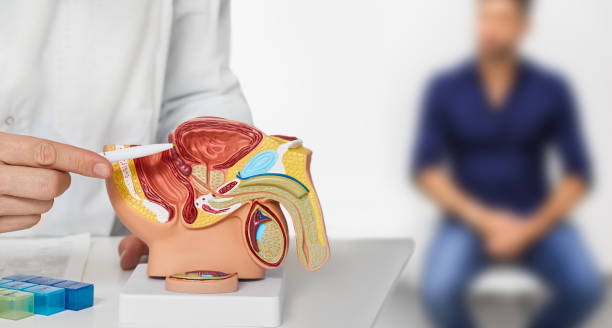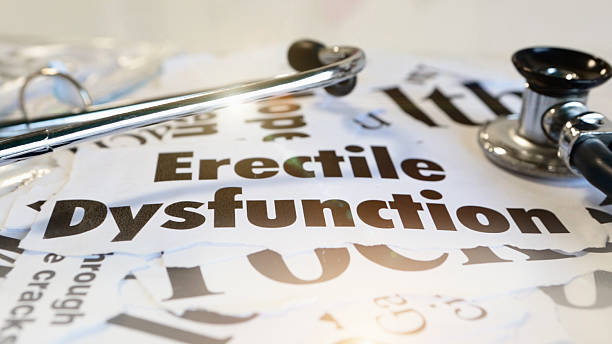Erectile dysfunction (ED) is a widespread condition that affects millions of men around the world, making it difficult to achieve or maintain an erection. While ED becomes more common with age, it is not an inevitable part of getting older—and the good news is that it is treatable. Today, a variety of effective treatment options are available, ranging from prescription medications and therapeutic approaches to cutting-edge innovations designed to restore sexual function.
In this blog, we’ll dive into the best treatment options for erectile dysfunction, how they work, and key factors to consider so you can make an informed decision about your health.
What Is Erectile Dysfunction?
Erectile dysfunction (ED) is a common condition that occurs when a man has difficulty achieving or maintaining an erection firm enough for sexual intercourse. ED can result from a variety of factors, including stress, anxiety, underlying health conditions like diabetes and high blood pressure, or poor blood circulation. Lifestyle habits such as smoking, excessive alcohol consumption, and lack of physical activity can also contribute to erectile issues.
While ED can be frustrating and impact self-confidence, the good news is that it is highly treatable. With the right approach—whether through medication, therapy, or lifestyle changes—men can restore sexual function and improve their overall quality of life.
1. Medications for Erectile Dysfunction

Prescription medications are one of the most widely used and effective treatments for erectile dysfunction (ED). These medications work by increasing blood flow to the penis, making it easier to achieve and maintain an erection. While some drugs may work better for certain individuals, most provide effective results.
Oral Medications for ED
Oral medications are the first-line treatment for ED and are commonly prescribed due to their convenience and effectiveness. The most well-known options include:
- Viagra (Sildenafil): The first FDA-approved ED medication, Viagra enhances blood flow to the penis when a man is sexually stimulated. It typically takes effect within 30 to 60 minutes and lasts for about four to six hours.
- Cialis (Tadalafil): Known for its long-lasting effects, Cialis can remain active in the body for up to 36 hours, earning it the nickname “the weekend pill.” This allows for more spontaneity compared to other ED drugs.
- Levitra (Vardenafil): Similar to Viagra, Levitra works by improving blood circulation to the penis. Some men find that it acts slightly faster than Viagra and may be effective even with a lower dose.
- Stendra (Avanafil): A newer ED medication, Stendra can work in as little as 15 minutes, making it the fastest-acting option. This can be beneficial for those looking for quicker results.
These medications require a doctor’s prescription and are usually taken 30 minutes to an hour before sexual activity. While they are generally safe, potential side effects include headaches, dizziness, nasal congestion, and upset stomach. It’s essential to consult a healthcare provider to determine the safest and most effective option based on your health condition.
Other Prescription Treatments for ED
For men who cannot take oral medications or do not respond well to them, alternative prescription treatments are available:
- Alprostadil Injections (Caverject): This treatment involves injecting medication directly into the penis to stimulate blood flow and induce an erection. Though highly effective, it requires proper technique and instruction from a doctor.
- MUSE (Medicated Urethral System for Erection): Instead of an injection, this method uses a small pellet of alprostadil inserted into the urethra. It is a less invasive alternative that still promotes improved blood circulation.
Both of these options can be beneficial for men who prefer non-oral treatments or have underlying health conditions that make oral ED medications unsafe.
When considering ED medications, always consult with a healthcare professional to find the best solution for your needs while ensuring safety and effectiveness.
2. Therapy Options for Erectile Dysfunction

If oral medications are not the best solution for you or you prefer alternative treatments, several therapy options can effectively help manage erectile dysfunction (ED). These therapies range from psychological counseling to medical devices and surgical implants, depending on the severity and cause of ED.
Counseling and Psychotherapy
In many cases, ED is linked to psychological factors such as stress, anxiety, depression, or past trauma. If emotional or mental health issues are contributing to erectile dysfunction, therapy can be a beneficial treatment option.
- Cognitive-Behavioral Therapy (CBT): This structured form of therapy helps men identify and change negative thought patterns that contribute to performance anxiety and sexual difficulties.
- Sex Therapy: Working with a specialized sex therapist can help address relationship concerns and build confidence in intimate settings.
- Couples Counseling: If ED is affecting your relationship, couples therapy can improve communication and intimacy between partners, reducing stress related to sexual performance.
Seeking professional help from a psychologist, counselor, or therapist can provide lasting benefits, especially if stress and anxiety play a significant role in ED.
Vacuum Erection Devices (VEDs)
A vacuum erection device (VED), also known as a penis pump, is a non-invasive option for men with ED. The device consists of a plastic cylinder that fits over the penis, a pump that removes air from the cylinder to create a vacuum, and a constriction band that helps maintain the erection.
- How It Works: The vacuum effect draws blood into the penis, resulting in an erection. Once the erection is achieved, a rubber ring is placed around the base of the penis to keep the blood trapped, allowing for sustained firmness during intercourse.
- Pros: Drug-free, non-invasive, and can be used at home.
- Cons: Some men find the process cumbersome or uncomfortable, and the erection may not feel as natural as with other treatments.
VEDs are a safe and effective alternative for men who cannot take medications or prefer a mechanical solution for ED.
Penile Implants
For men with severe ED who do not respond to medications or other treatments, penile implants offer a long-term surgical solution. These medical devices are implanted inside the penis, allowing men to achieve an erection on demand.
There are two main types of penile implants:
- Inflatable Implants: These consist of a fluid-filled system with a pump placed in the scrotum. When activated, the implant inflates, mimicking a natural erection. This type provides a more natural look and feel when compared to other surgical options.
- Malleable (Semi-Rigid) Implants: These are bendable rods inserted into the penis that allow for manual positioning. While they provide a permanent firmness, they are less discreet than inflatable implants.
While penile implants have high satisfaction rates, they require surgery and are generally considered only after other treatments have failed. However, for men with severe ED, they can provide a reliable and lasting solution.
Choosing the right therapy option depends on individual preferences, medical history, and the underlying cause of ED. Consulting a healthcare provider can help determine the most effective approach for your specific needs.
3. New Innovations in Erectile Dysfunction Treatment

In recent years, several groundbreaking treatments have emerged for erectile dysfunction (ED), offering new hope to men who have struggled with traditional options. These cutting-edge therapies focus on improving blood flow, regenerating tissue, and providing long-term solutions for ED. While many are still being studied, early results suggest they could revolutionize ED treatment in the future.
Shockwave Therapy for ED
Low-intensity shockwave therapy (LiSWT) is a non-invasive treatment that uses sound waves to stimulate blood flow and promote the growth of new blood vessels in the penis. This process, known as angiogenesis, can enhance erectile function and improve overall vascular health.
- How It Works: During the procedure, a device delivers gentle shockwaves to the penile tissue, triggering natural healing and increased blood circulation.
- Pros: Non-invasive, painless, and does not require medication.
- Cons: Still considered experimental, with ongoing clinical studies needed to confirm long-term effectiveness.
Shockwave therapy is especially promising for men with vascular-related ED who have not responded well to oral medications. Many patients report noticeable improvements, but multiple sessions over several weeks are typically required for optimal results.
Stem Cell Therapy for ED
Stem cell therapy is an emerging regenerative treatment aimed at repairing damaged penile tissue and restoring natural erectile function. This therapy involves injecting stem cells—often derived from fat tissue or bone marrow—into the penis to stimulate cellular repair and improve blood vessel function.
- Potential Benefits: Stem cells have the ability to regenerate tissues, enhance blood flow, and potentially provide a long-term or even permanent solution for ED.
- Current Limitations: Still in the experimental phase, with clinical trials ongoing to assess safety and effectiveness.
If proven successful, stem cell therapy could revolutionize ED treatment, offering a regenerative approach rather than just symptom management.
Platelet-Rich Plasma (PRP) Therapy
PRP therapy, also known as the P-Shot (Priapus Shot), is another innovative approach that harnesses the body’s natural healing ability. This procedure involves drawing a small amount of the patient’s blood, processing it to concentrate the platelet-rich plasma (PRP), and then injecting it into specific areas of the penis.
- How It Works: PRP contains growth factors that promote tissue regeneration, improved blood flow, and enhanced nerve sensitivity.
- Potential Benefits: May help improve erectile function, enhance sensitivity, and even increase penile size in some cases.
- Current Limitations: Still undergoing research, with effectiveness varying between individuals.
PRP therapy has been used in other medical fields for wound healing and joint repair, and early studies suggest it may be a promising ED treatment, particularly for men with mild to moderate erectile dysfunction.
Conclusion: Finding the Best Erectile Dysfunction Treatment for You
Erectile dysfunction is a common but treatable condition, and it doesn’t have to affect your quality of life permanently. With a wide range of treatment options available—including medications, therapy, medical devices, and cutting-edge innovations—there is a solution for every man. The key to successful treatment is understanding the underlying cause of your ED and choosing the approach that best aligns with your health needs and lifestyle.
If you’re struggling with ED, the first step is to consult a healthcare professional. A doctor can evaluate your symptoms, identify any contributing factors, and recommend the most effective treatment plan tailored to your situation. Whether you benefit from oral medications, counseling, a non-invasive therapy like shockwave treatment, or a more advanced solution such as penile implants, there is hope for restoring your confidence and sexual health.
Don’t let ED hold you back—seek professional guidance and take control of your well-being today.

